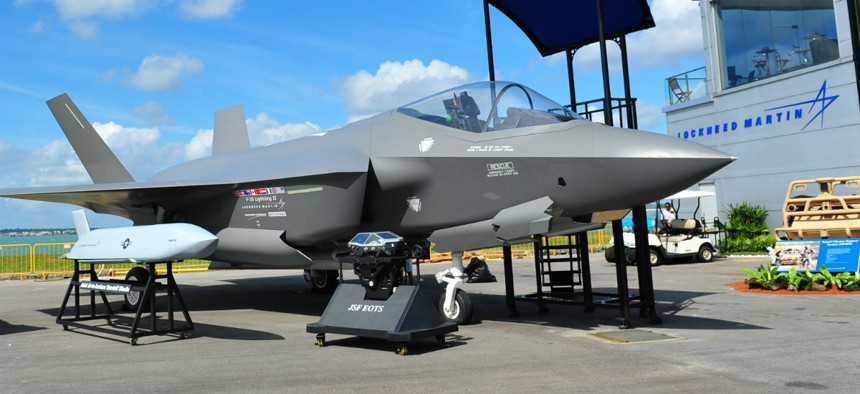
Lockheed Martin Corp. dominated the 2015 rankings of top contractors for each major agency.
Federal Contract Spending Shows Signs of a Possible Rebound
Govini “scorecard” reports 2 percent drop in 2015, the smallest in four years.
Agency spending on top contractors dipped by 2 percent in fiscal 2015, its smallest annual decline in four years, according to the 2016 Federal Scorecard released April 15 by the Arlington, Va.-based business data intelligence firm Govini.
The fact that half of all agencies—notably the Navy—boosted contract spending is a sign of a “rebound, or spending stabilization, as agency funding solidified,” said Govini founder and CEO Eric Gillespie.
The scorecard reports on 277 vendors working for 24 agencies and is available as a table-tent hard copy. It offers a unique measure of contractor performance and agency spending using the company’s proprietary metrics. “This is a big data approach to reveal market insights,” Gillespie said. “While budget data shows where the government claims it will spend, the scorecard shows what was actually spent and indicates future spending trends.”
Govini has formed a data sharing partnership with Government Executive Media Group, which co-sponsored this third iteration of the score card, labeled “Election-year spending edition.” A quick analysis points to trends such as the continuing demand for services contracting.
“Big data provides a way to slice up the market to cut across industries, agencies and companies in many ways that companies haven’t explored,” Gillespie added. Govini’s metrics illustrate how much work is required to win a contract as well as contract complexity and competitors per contract action.
In the fiscal 2015 rankings of top contractors for each major agency, Lockheed Martin Corp. dominated with contracts with the Navy, Army, Air Force, Defense Research Labs, the Transportation Department and the Social Security Administration. “The Navy was the only Defense agency to increase its contract obligations, through recapitalization of major weapon system programs, including the F-35 and Virginia-class submarines, which emphasizes the U.S. pivot to Asia,” Govini stated. “In FY15, the Navy spent 55 percent more on aircraft than on ships and landing vessels, with aircraft contract awards totaling almost $15 billion.”
In the continually strong services arena, the top two categories produced a combined $32 billion in awards. The industry trend toward more mergers and acquisitions allowed some newly formed entities to climb in the rankings, Govini noted. At the Veterans Affairs Department, newly formed CSRA jumped six spots in rank to join the top 10 vendors by capturing $106 million in awards.
Govini also found a 27 percent spike in prescription drug sales, over the average during the past three years. McKesson alone grew its share by 36 percent with $6 billion in work for the Health and Human Services Department and the VA.







